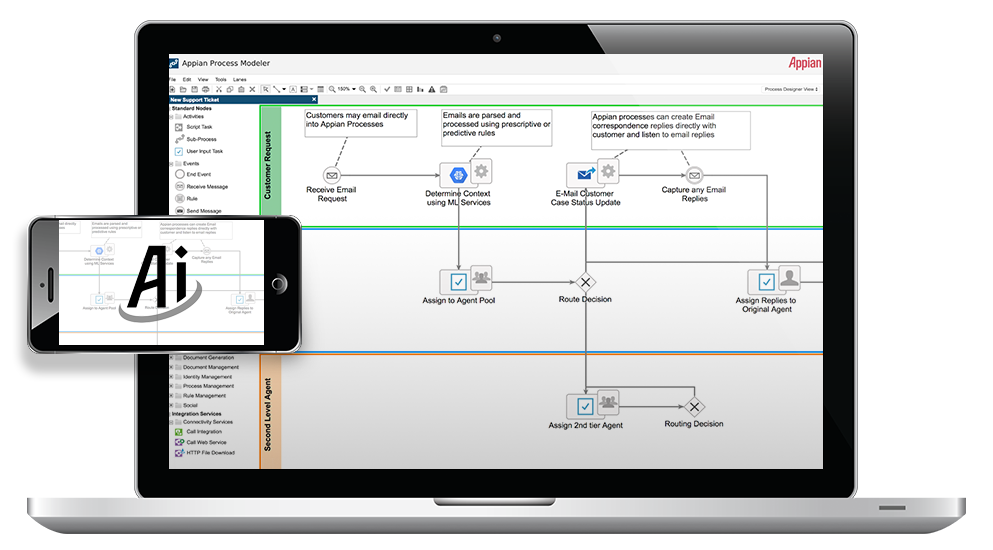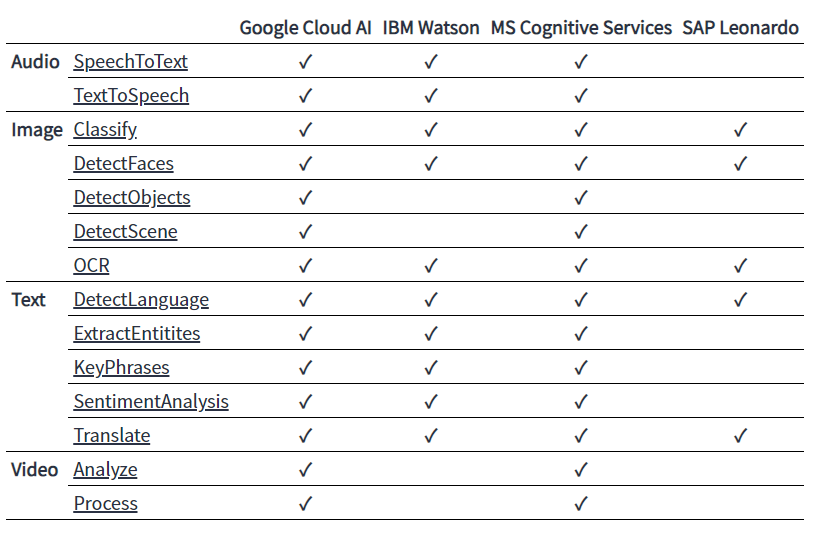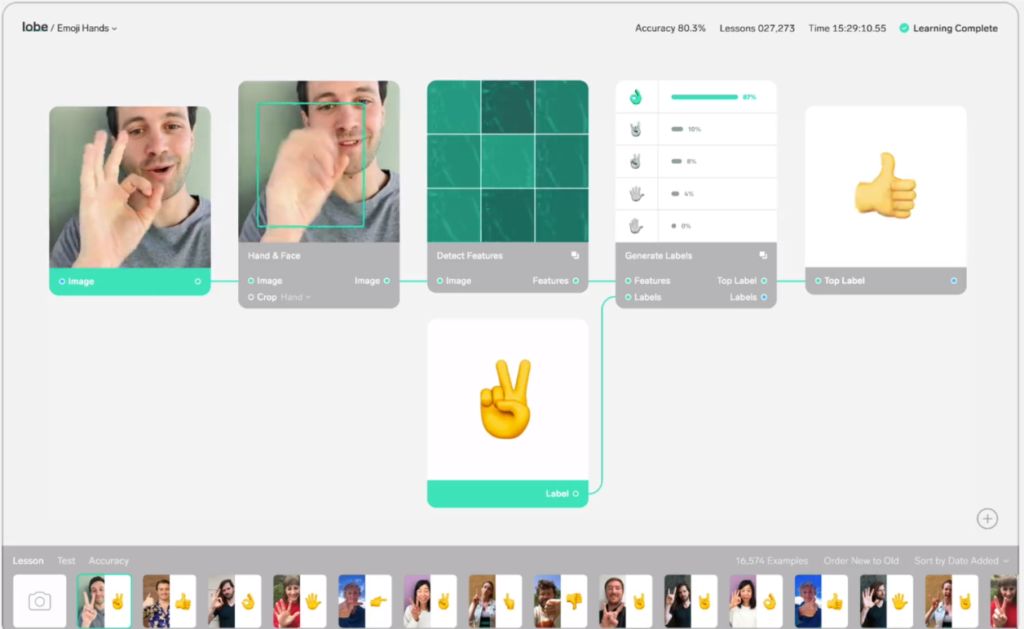There are quite a few tools for modeling and executing Machine Learning pipelines but not many that help you to integrate such pipelines as part of your “normal” software development process. This post highlights some low-code platforms that help you to integrate AI components (chatbots, image classifiers, facial recognition, voice interactions,…) alongside your apps to make them more “intelligent” (also known as smart apps).
Even if, as I say, your choices are still rather limited, this sector is blooming so expect rapid changes in the months to come. Low-code tools are quickly understanding that their users want to build apps that have some level of intelligence. And they need to help them or they will flee to the competitors that offer those.
So far, low-code tools are adding new “units/modules” in their DSLs to enable developers to specify what parts of their apps should be smart. For now, this smart part basically means connecting the app with a packaged external service (for text to speech, for object detection, for sentiment analysis,…) where the actual reasoning takes place. Configuration is bare to none. Still, for many applications, this is good enough. The intelligent part is not the core of the app (if it is, then you better move to one of the tools above) but an additional functionality.
Let’s see in more detail what AI extensions offered by well-known low-code vendors (this is just a first pass on the notes I’ve been taken in the last couple of months, let me know the tools I’m missing!).
Microsoft Power Platform
The latest update of Power Platform introduced the AI Builder. enables everyone to leverage AI and machine learning to make their apps and automations more intelligent. The AI Builder takes common AI scenarios and provides point-and-click solutions for app makers to solve everyday tasks like forms processing, object detection, and text and binary classification.

An ambitious move to put the AI power to the hands of business users!
Appian AI
Appian AI adds AI capabilities to the Appian platform. So far, this mostly means that you can easily call and use Google AI services out-of-the-box within an Appian project to extend your app with Translation, Vision (label detection, OCR) and Natural Language processing (entity recognition, sentiment analysis,…) capabilities

Genexus
This table shows the intelligent tasks you can model in Genexus. Note that for some of them you can also choose the actual provider to call at runtime)
Genexus has also recently released a Chatbot generator and in fact we’re looking at how that generator could be combined with our own Jarvis multi-platform chatbot DSL and runtime environment.
Mendix
Mendix is moving in a similar direction (e.g. see this example of chatbot creation with Mendix) but right now the process seems to be more manual.
OutSytems
OutSytems is well-known for its smart modeling capabilities (AI to simplify modeling, e.g. recommending new classes or associations in your diagram that you may be missing, based on previous models they have collected) but, lately, have started to release a good number of AI integrations. Not linked with Google (as it was the case for Appian above) but more oriented towards Microsoft services.
Once you create an Azure account, you can start building things like chatbots (see a chatbot flow below), all kinds of language analysis or even connect to the Azure ML service to train a ML model with your app data and use it for predictions.
Lobe
Lobe (now part of Microsoft) is a new player in the world of ” low-code for AI ” tools. Lobe wants you to easily provide training data to build a deep learning model to be then shipped with your app. They are still in beta so it’s difficult to see how far it could go but from its visual deep learning examples, it’s easy to imagine a number of very interesting mobile smart apps that could be created with Lobe.
FNR Pearl Chair. Head of the Software Engineering RDI Unit at LIST. Affiliate Professor at University of Luxembourg. More about me.





You have penned down content in this post very perfectly; the language is easy to understand. The concept of low-code is new for me. I saw it the first time, and you have described it pretty well. So, AI builders are for helping developers to code less and faster to get the things done easily. If I were doing an AI project, then I would use Genexus or Appian AI. Lobe is also a great AI builder. Thanks for the insights in useful content. 🙂